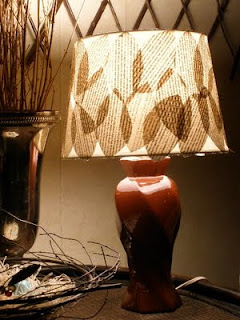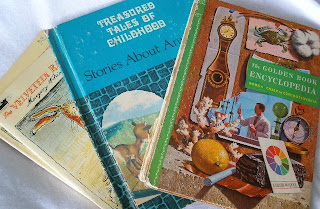It is spring in Portland, although the robins had to break through a layer of ice this morning in our birdbath. With Easter coming and spring late, we are feeling the need for a little nature fix. How about bringing nature inside since it's so cold outside, and without spending money or having to water anything?
 |
Starting with the front door, if you have a couple of pots to put on either side, find some interesting branches and stick them in some dirt. The branches can be numerous and stand on their own, and may even take root and sprout leaves if you water them. I splurged on some primroses and do water them when I remember. The boxwood wreath I made in an earlier blog helps things look hopeful and springy.
|
 |
| Bringing cut branches inside helps give a ready-to-bud feeling to your rooms. These are some birch branches I found while walking the dog. They were so long they just naturally formed a curved arch above our fireplace and I liked it so much I kept it that way. No watering necessary! Of course, if you like things a little neater, the branches could be shorter and stick straight up. |
 |
| A friend made these simple candleholders out of some thick cut branches. Cut three sections with a saw in three different heights. Although these were cut out with a large drill bit, votive or tea lights in a glass jar could also just be set on top. |
 |
| River rocks also are simple and beautiful- and free. I collect rocks on walks and we have some in our landscaping we got for free years ago from someone who had an extra wheelbarrow full. Just wash them, pile them into a vase, bowl or mason jar and be reminded of beach and river walks. Agates are wonderful too. |
 |
| A really Eastery-springy idea is to blow some eggs. Take a raw chicken egg and poke a hole in each end with the tip of a sharp knife, making the hole as small as possible. To make the blowing easier, take a bamboo skewer or a toothpick, stick it in the egg and try to break the yoke. Then lean over a bowl and blow the raw egg out into the bowl. If you get a blow-out as seen above, it's okay- it just looks like something hatched. While letting the shells dry, make scrambled eggs or a quiche! |
 |
You can paint them as described in the wreath blog or leave them gloriously egg shell white. Grab some moss off a rock or tree trunk (or buy it if you must) and set it in a bowl or on a pretty plate. Set the eggs on top. Watch out for cats because they love to play with them and break them. Scrambled eggs AGAIN anyone?
Happy Spring! |





































